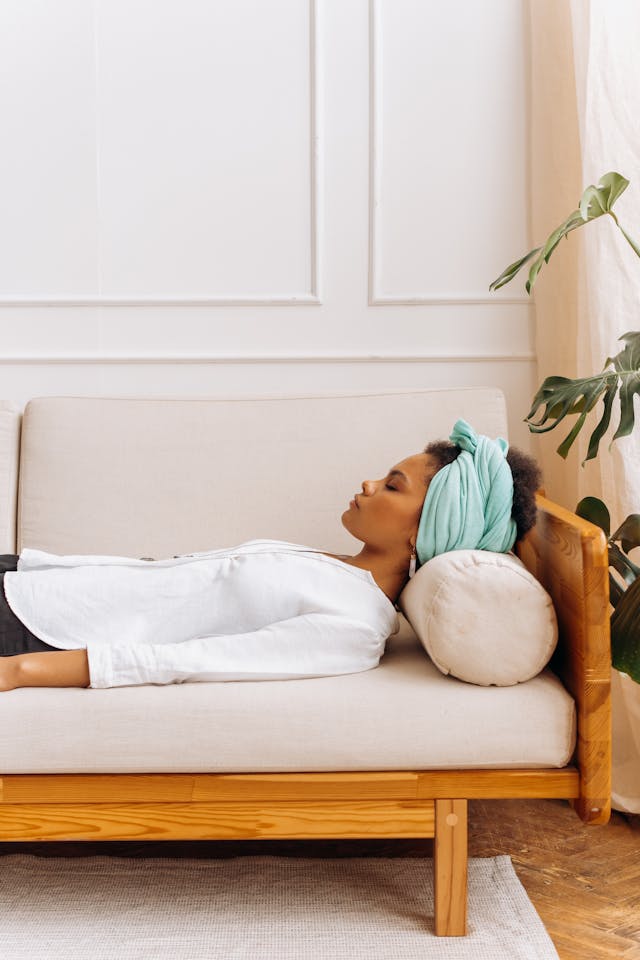Relaxation is about finding effective ways to release both physical and mental tension. Tension is a natural response to perceived threat or danger, often accompanied by an increased heart rate, muscle tightness, rapid breathing, perspiration, and elevated blood pressure. While these responses are normal, prolonged tension can negatively impact our health and well-being.
Relaxation is a key antidote to stress, helping us to manage anxiety, calm the nervous system, and regain a sense of control. However, relaxation isn't just about sleeping or watching television—it involves practising specific techniques that activate the body’s natural relaxation response. Like any skill, relaxation requires regular practice, even during calm periods, so you're better equipped to manage stress when it arises.
Some benefits of regular relaxation include:
- Improved sleep
- Reduced physical pain
- Lower stress levels
- Enhanced sense of safety and calm
There are many ways to relax, but three simple and effective exercises can begin to make a difference in your daily life:
Relaxation Exercises to Try
1. Diaphragmatic Breathing (Deep Belly Breathing)
- Sit comfortably with your knees bent and your back supported.
- Place one hand on your belly and the other on your chest.
- Inhale slowly through your nose for a count of four, focusing on your stomach rising.
- Hold your breath for four counts.
- Exhale slowly through your mouth for a count of four, noticing your stomach fall.
- Repeat this process for 5–10 minutes daily, or as needed.
2. Progressive Muscle Relaxation (PMR)
- Find a quiet, comfortable space where you won't be disturbed.
- Sit or lie down in a supported position.
- As you inhale, tense a specific muscle group (e.g., your toes) for 5–10 seconds.
- As you exhale, release the tension and allow that muscle group to fully relax.
- Continue moving through the body—feet, calves, thighs, stomach, back, chest, shoulders, neck, mouth, cheeks, jaw, eyes, and forehead—tensing and releasing each area in turn.
3. Guided Imagery
- Lie down or sit comfortably and close your eyes.
- Play calm, instrumental music if desired.
- Take a few deep breaths in and out.
- Visualise a peaceful image—such as a beach, forest, mountain, loved one, or spiritual symbol.
- Focus on the details: colours, textures, scents, sounds, and feelings.
- Stay with this image for several minutes, inviting a sense of peace and stillness.
- When ready, gently return your awareness to the room and open your eyes.
Using mindfulness music during relaxation can significantly enhance the effectiveness of the experience. Mindfulness music, typically slow-paced and without lyrics, helps to calm the nervous system by reducing stimulation and promoting a sense of mental stillness. The steady rhythm and soothing tones can support slower breathing and heart rate, encouraging the body to shift from a state of stress to one of relaxation.
It also serves as an anchor for attention, helping to reduce racing thoughts and distractions, which is particularly useful during practices like guided imagery, meditation, or deep breathing. Music can evoke feelings of comfort, safety, and emotional release, making it easier to connect with a sense of inner calm. Furthermore, pairing music with relaxation techniques can create a positive association in the brain, making future sessions more effective.
Final Note
In conclusion, practising relaxation regularly can enhance your emotional and physical well-being. Start small and be patient with yourself—like any habit, it becomes easier and more effective with time.
This blog was written by Antoinette © (All rights reserved). I'd love to hear your thoughts—feel free to share them in the comments section below! If you found this helpful, please visit my shop and support the work by buying me a coffee. Your support means the world and helps keep this space going. ☕💛
https://buymeacoffee.com/antoinettey

